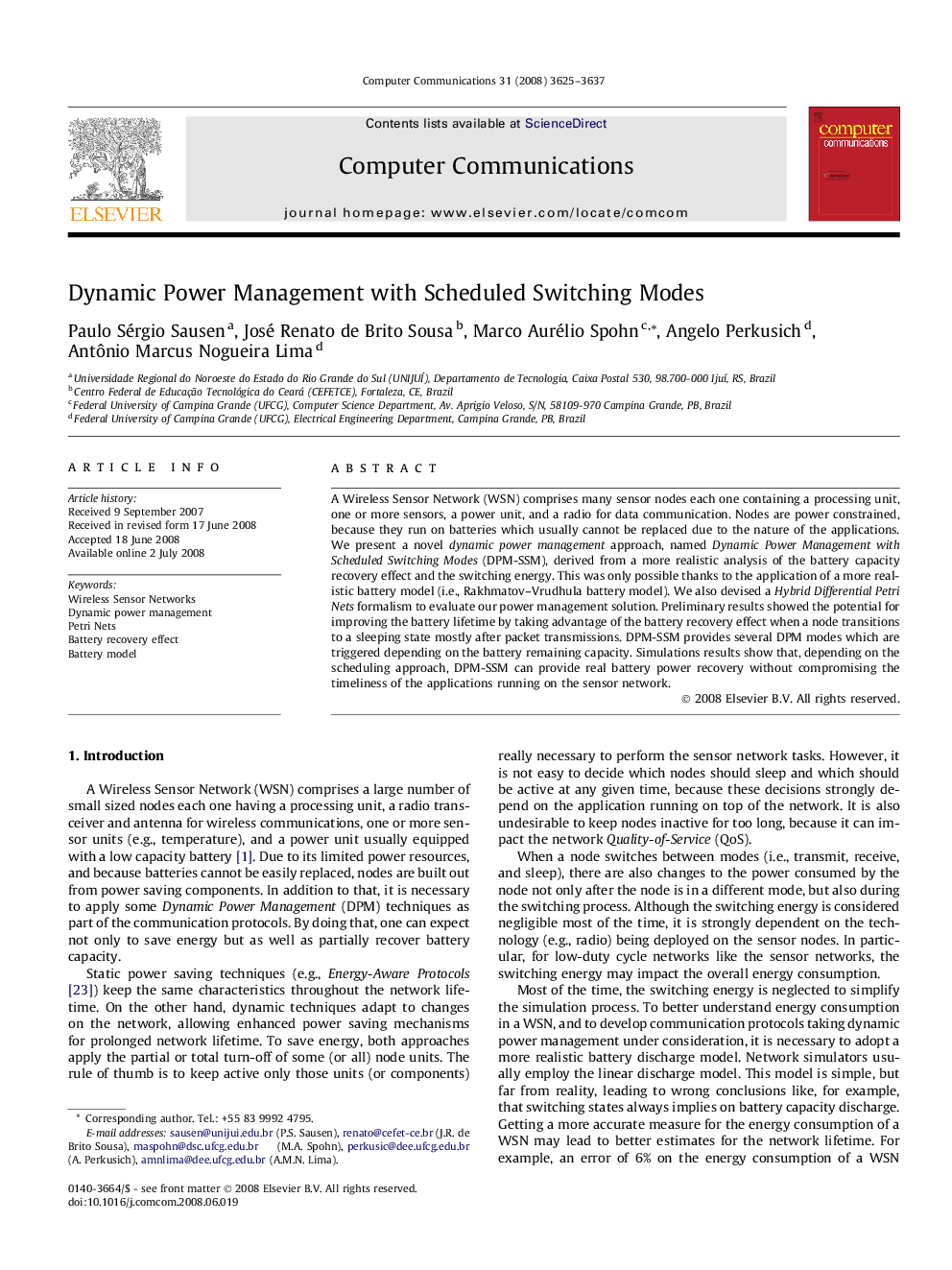| Article ID | Journal | Published Year | Pages | File Type |
|---|---|---|---|---|
| 450276 | Computer Communications | 2008 | 13 Pages |
A Wireless Sensor Network (WSN) comprises many sensor nodes each one containing a processing unit, one or more sensors, a power unit, and a radio for data communication. Nodes are power constrained, because they run on batteries which usually cannot be replaced due to the nature of the applications. We present a novel dynamic power management approach, named Dynamic Power Management with Scheduled Switching Modes (DPM-SSM), derived from a more realistic analysis of the battery capacity recovery effect and the switching energy. This was only possible thanks to the application of a more realistic battery model (i.e., Rakhmatov–Vrudhula battery model). We also devised a Hybrid Differential Petri Nets formalism to evaluate our power management solution. Preliminary results showed the potential for improving the battery lifetime by taking advantage of the battery recovery effect when a node transitions to a sleeping state mostly after packet transmissions. DPM-SSM provides several DPM modes which are triggered depending on the battery remaining capacity. Simulations results show that, depending on the scheduling approach, DPM-SSM can provide real battery power recovery without compromising the timeliness of the applications running on the sensor network.
